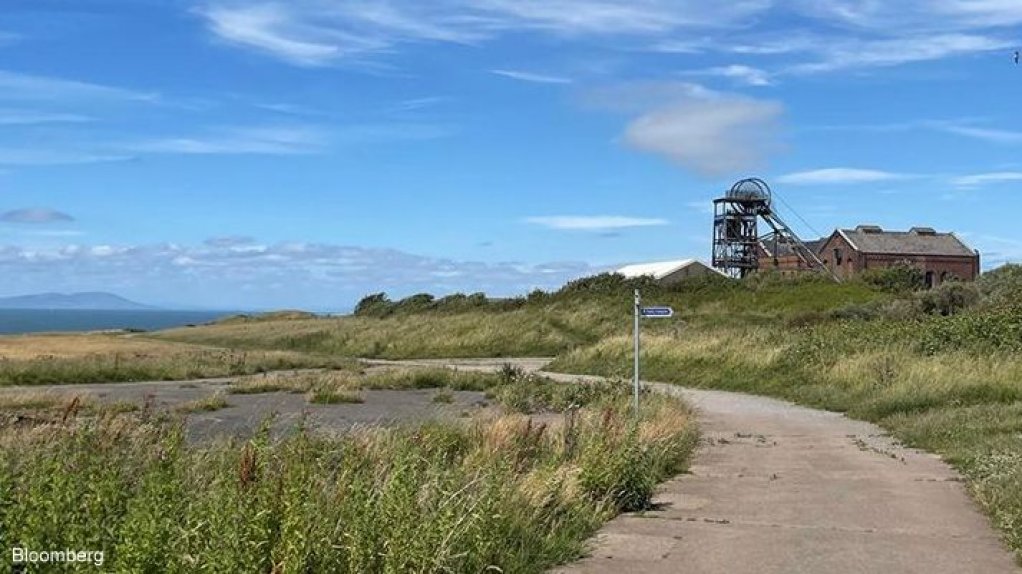UK coal mine dilemma pits energy crisis against green goals


The mine shaft tower at the disused Haig Pit on the proposed site of a new coal mine, in Whitehaven, UK.
In the far northwest corner of England, coal mining was so finished that the local museum paying tribute to the industry shut a few years ago after running into financial trouble.
Yet at the dormant Haig Pit in Whitehaven, there are signs that an activity long considered dead wants to come back to life. Next to the mine shaft tower and red-brick building that housed the exhibit space is the office of West Cumbria Mining, which plans to open the UK’s first deep coal mine in more than three decades.
After years of opposition from environmental groups and political wrangling, the UK government delayed a decision on whether the mine should go ahead, following the July resignation of Prime Minister Boris Johnson. It's been pushed back again, with a ruling due by November 8. But whatever happens, the controversial project has highlighted the broader dilemma facing the next leader over how to balance the country’s green goals with the upheaval of fuel supplies in the wake of Russia’s war in Ukraine.
The proposed mine shocked climate activists and collided with the UK’s promises to lead on climate action — and “consign coal to history” — when it hosted the COP26 summit in November in Glasgow, Scotland. Britain’s last deep coal mine, in Yorkshire, closed at the end of 2015.
The chair of the government’s independent climate watchdog said in June the plans were “absolutely indefensible” and would blow a hole through the nation’s mid-century net zero pledge. The mine was approved by the local council in 2020 before the government intervened to hold a public inquiry after concerns were raised that it contradicted the country’s legally binding goal to reach net-zero emissions by 2050.
For a lot of people in Whitehaven, the pit would mean welcome jobs and investment.
“This is definitely a deprived area, so if they use local skills it would be a great benefit,” Sylvia Atkinson, a 49-year-old nurse and lifelong resident of the area, said while walking her dog along an old mining railway. There was some opposition locally, but most people were accepting of the project. “We’ve always been an industrial area,” she said last month.
The final decision used to rest with Michael Gove, secretary of state for levelling up, housing and communities, and Johnson hinted the project would get the go-ahead, saying it “makes no sense to be importing coal” when the UK has its own resources. The government appeared to be weakening a key climate pledge to shut all of its coal-fired power plants by October 2024.
Then Johnson dismissed Gove before resigning himself after a series of scandals. Greenlighting or rejecting the mine currently sits with Greg Clark, Gove’s replacement, while the Conservative Party chooses its leader and Britain’s next prime minister. A decision was planned by August 17 before being postponed until after a new cabinet is in place.
Besides raising questions about the functioning of the government, the mining project is more than just a clash between environmental concerns and the needs of industry.
The project may not jibe with the UK government’s previous climate goals, but it does with the flagship “levelling up” policy of closing the economic gaps between wealthier and poorer regions. West Cumbria, once a stronghold of the opposition Labour Party, is part of the northern “Red Wall” that backed leaving the European Union in 2016 and then supported Johnson during the 2019 election.
The coal in Whitehaven is of the metallurgical kind, known as “coking coal” and used for steelmaking rather than feeding power plants to generate electricity. The government is trying to promote the steel industry as a beneficiary of Brexit and said in June it would prolong a set of tariffs and quotas by two years to protect domestic producers, despite concerns the move would conflict with World Trade Organization rules.
The new mine promises to create 504 positions plus an additional 50 apprenticeships to train people up. It uses land on the Irish Sea coast vacated by a chemicals works that was a major employer before shutting in 2005. The site is still surrounded by fencing and turnstiles for workers to come and go.
Even though it’s on the edge of the Lake District National Park, a tourism hot spot, West Cumbria traditionally has higher levels of unemployment and deprivation after the decline of its industry.
The area’s affinity with mining and steelmaking reaches back to the early days of the Industrial Revolution in the 18th century. Then, like much of Britain’s heavy industry, it went into a post-World War II decline that accelerated in the 1970s and 1980s. Haig Pit shut in 1986 before eventually becoming a museum, which itself closed 30 years later.
Workington, about 14 km up the coast from the Haig Pit, used to make railway track before the last of it rolled off the production line in 2006. A photo in the entrance of the train station depicts their use in Sri Lanka. The pub in the center of town is called “The Henry Bessemer” after the 19th-century inventor of modern steelmaking.
In recent years, the biggest employer has been the Sellafield nuclear reprocessing plant, which is being decommissioned. Mike Starkie, the Conservative mayor of Copeland, is an avid backer of the mine, saying it would help diversify the local economy away from a reliance on the nuclear industry while also attracting younger people to an area with a declining population.
Britain’s messy politics have cast a shadow over the country this year, but Starkie said it’s about time to get the project moving. “It would be a huge shot in the arm for the local economy,” he said. “The world has to keep on turning.”
Comments
Press Office
Announcements
What's On
Subscribe to improve your user experience...
Option 1 (equivalent of R125 a month):
Receive a weekly copy of Creamer Media's Engineering News & Mining Weekly magazine
(print copy for those in South Africa and e-magazine for those outside of South Africa)
Receive daily email newsletters
Access to full search results
Access archive of magazine back copies
Access to Projects in Progress
Access to ONE Research Report of your choice in PDF format
Option 2 (equivalent of R375 a month):
All benefits from Option 1
PLUS
Access to Creamer Media's Research Channel Africa for ALL Research Reports, in PDF format, on various industrial and mining sectors
including Electricity; Water; Energy Transition; Hydrogen; Roads, Rail and Ports; Coal; Gold; Platinum; Battery Metals; etc.
Already a subscriber?
Forgotten your password?
Receive weekly copy of Creamer Media's Engineering News & Mining Weekly magazine (print copy for those in South Africa and e-magazine for those outside of South Africa)
➕
Recieve daily email newsletters
➕
Access to full search results
➕
Access archive of magazine back copies
➕
Access to Projects in Progress
➕
Access to ONE Research Report of your choice in PDF format
RESEARCH CHANNEL AFRICA
R4500 (equivalent of R375 a month)
SUBSCRIBEAll benefits from Option 1
➕
Access to Creamer Media's Research Channel Africa for ALL Research Reports on various industrial and mining sectors, in PDF format, including on:
Electricity
➕
Water
➕
Energy Transition
➕
Hydrogen
➕
Roads, Rail and Ports
➕
Coal
➕
Gold
➕
Platinum
➕
Battery Metals
➕
etc.
Receive all benefits from Option 1 or Option 2 delivered to numerous people at your company
➕
Multiple User names and Passwords for simultaneous log-ins
➕
Intranet integration access to all in your organisation



















